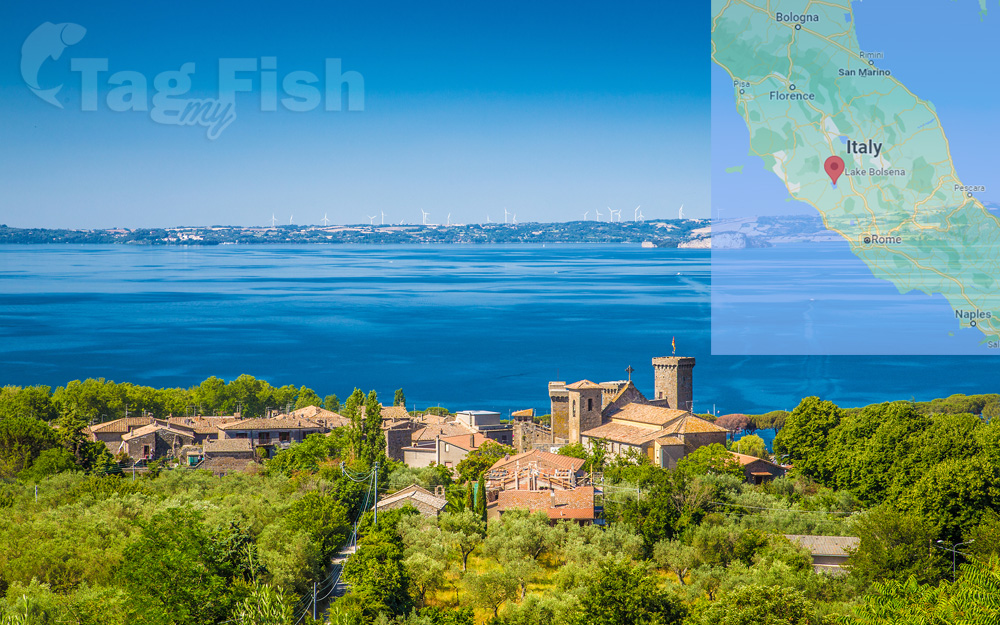Lake Bolsena

Blenniiformes - Blennies
Blenniiformes - Blennies
Lake Bolsena (Italian: Lago di Bolsena) of central Italy, is a lake of volcanic and tectonic origin. It is the largest volcanic lake in Europe. Roman historic records indicate activity of the Vulsini volcano occurred as recently as 104 BC; it has been dormant since then. The two islands in the southern part of the lake were formed by underwater eruptions following the collapse that created the depression.
The lake is supplied entirely from the aquifer, rainfall, and runoff, with one outlet at the southern end. A sewage treatment plant filters most of the raw sewage from the surrounding communities. Constructed in 1996, it features pipelines transporting the sewage from every major community around the lake to the treatment plant on the Marta River; that is, no effluents enter the lake. Fertilizers are a second source of contamination. However, the chemical content of the lake is monitored at several stations around it.
Geography
The lake has an oval shape typical of crater lakes. The long axis of the ellipse is aligned in a north-south direction. The bottom is roughly conical reaching a maximum depth at a point in the middle. The entire lake is surrounded by hills on the flanks and summits of which are the comuni. The watershed was home to 22,000 permanent residents in 2004, and 35,000 in the summer season.
Elevations on the north of the lake are the highest, with a maximum of 702 m (2,303 ft). As the lake is at 305 m (1,001 ft), no hill is more than 397 m (1,302 ft) higher than it.
Fish and fishing
Since antiquity, the lake has been well stocked with fish, and fishing has always been an important resource for the local economy as well as the basis for the local diet.
Fish that have always been present in the lake are eel, pike, smelt, rudd, tench, and chub. Among the crustaceans are prawn and river crab. Other species such as stickleback, shad, loach, roach, and bleak (Alburnus alborella), which are rarely seen today, are probably native.
All of these species, even those which are irrelevant from a commercial point of view, are still important because they contribute to the richness and the balance of the entire ecosystem. In fact, the more varied an environment, rich in many well-distributed species, the better it can support the inevitable impact of human activity.
Which fish have been recently introduced into the lake?
The lake does not have any tributaries and only one small outflow, the Marta river. The populating of new species of fish, rather than by natural means, has happened principally by the work of man, whether with voluntary targeted introductions or through campaigns of re-population carried out in a non-controlled way, in particular those carried out for sport fishing. The species introduced by man for professional fishermen are lake whitefish – introduced for the first time at the end of the 1800s – and European perch.
Other species, introduced primarily for sport fishing but also for the fight against mosquitoes – or simply through carelessness – are black bass, pumpkinseed, catfish, carp, crucian carp and gambusia.




